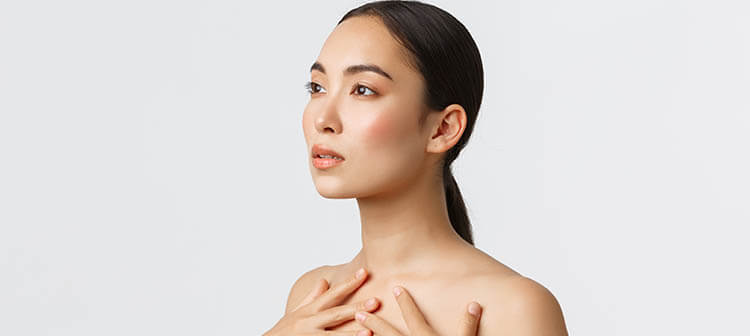Rhinoplasty | December 2020
Although you may often hear you have your father’s eyes or your mother’s smile, a recent study has found that the nose is the facial feature we’re most likely to inherit from our parents. Scientists at King’s College in London found that nose shape, and the tip in particular, is 66% likely to have been passed down the family line.
The nose’s central position means it plays an important role in facial balance and even slightly asymmetrical or disproportionate noses can affect harmony. A rhinoplasty procedure can therefore have a significant and permanent effect and can be challenging surgery, demanding a skilled and experienced surgeon.
The nose is composed of bones and cartilage, which can be trimmed and reshaped to enhance the appearance of the nose. The following aesthetic changes to the nose can be achieved:
- Reshape a bulbous tip
- Change the projection of a drooping tip
- Narrow very flared or wide nostrils
- Eliminate a nasal hump or bump
- Lessen the width of the nasal bridge
- Shorten the length of the nose if too long
- Achieve symmetry in the nose
- Alter the projection of the nose from the face
Balancing aesthetics and function in the rhinoplasty
“A rhinoplasty is not only an aesthetic procedure, as it can also address function as some patients can have quite serious pre-existing breathing problems,” Mr Alex Karidis explains. “We have the benefit of working with Mr Robert Quiney, an experienced ENT surgeon here at the Hospital of St John and St Elizabeth.
“During your rhinoplasty consultation, we will discuss both aspects and if issues with nasal function are identified and depending on the degree of the problem, then I recommend they see Mr Quiney for a consultation. If he thinks the functional issues can or should be dealt with surgically, then we will arrange an operation that will cover both aspects.
“We work at the same time; he joins me in the operation and he will address any internal issues that are affecting breathing and then I do the aesthetic side. The patient has best of both worlds.”
Having realistic expectations
Having realistic expectations regarding the outcome of a rhinoplasty is critical. Making sure your sense of aesthetics aligns with the surgeon is also essential.
“If you have a different sense of aesthetics to the surgeon, it’s a recipe for disaster as you’re never going to be happy with the results. And it can be hard sometimes for patients to establish this in advance of their procedure. One way you can do this is by looking at their before and afters,” Mr Karidis points out. “That’s why I have these on my website – not that patients can pick a nose, but it gives you an idea of what that surgeon can do. If they are showcasing these images, that must give you a clear idea of what they believe is a good aesthetic result. If that doesn’t align with yours, then it’s probably best to look elsewhere.
“During surgery, you have to completely rely on the surgeon’s aesthetic appraisal of how it’s going. A rhinoplasty procedure is like sculpting. I don’t do it all in one fell swoop. I do it millimetre by millimetre, constantly taking a step back and assessing it and you stop when you think it looks right. There’s no pattern you can put on the nose. It’s got to be an eye thing.”
For more advice on rhinoplasty surgery or nose tip surgery at our London clinic and what it can achieve, call us on 020 7432 8727 to arrange a consultation with Mr Alex Karidis. Our trusted surgeon, Mr Mark Ho-Asjoe, also specialises in nose surgery for Asian patients for any clients looking for culturally-considered rhinoplasty.
















